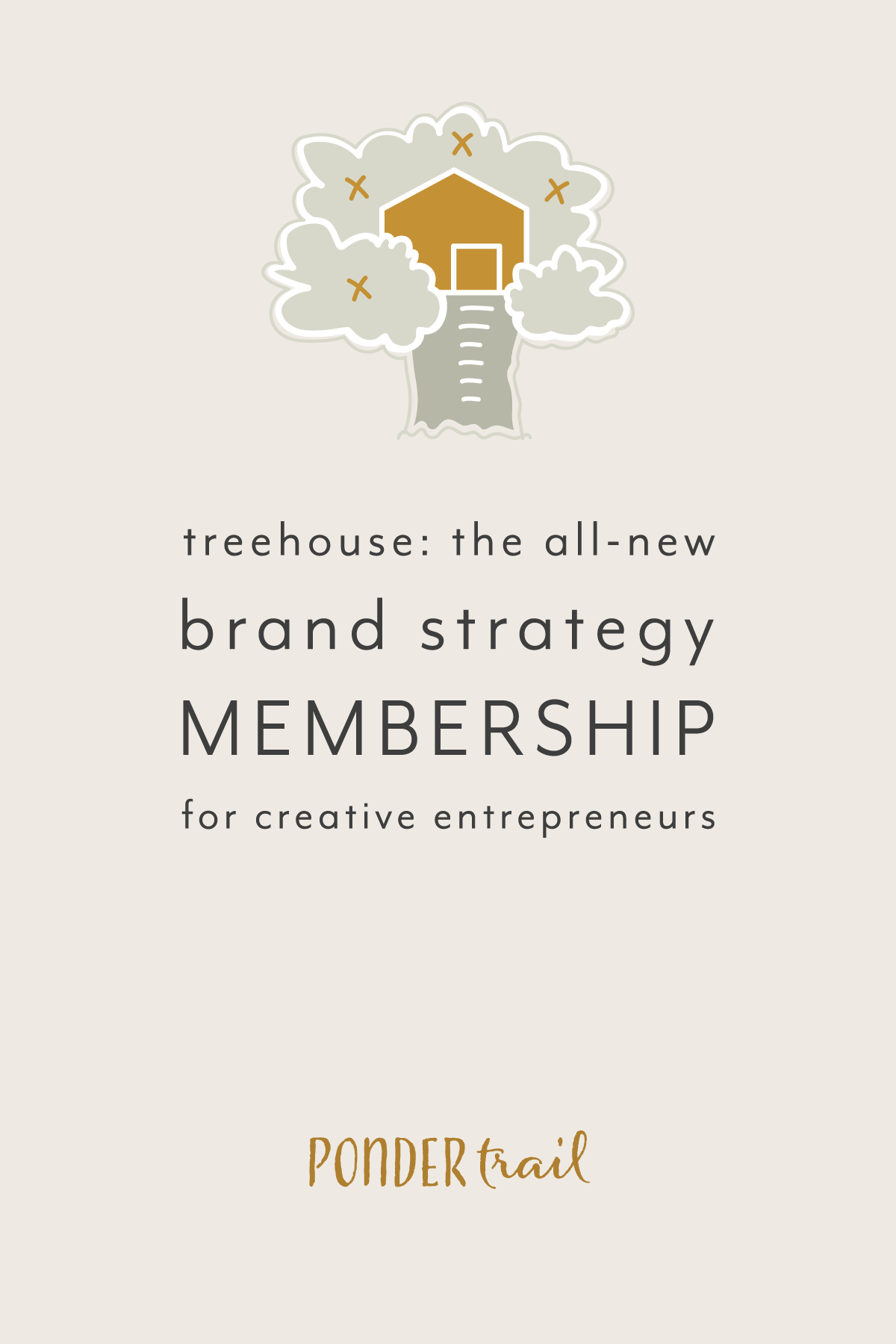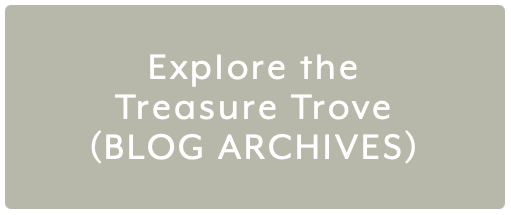Goal-Smashing Planning Techniques for Creative Business
Going into the new year, I had a refreshed perspective about planning.
Because in 2020, I let some of my goals go without stressing about it. I took some time off to enjoy several other creative hobbies I hadn’t done in a while.
After a few months of making polymer clay earrings, doing home decor projects, and working on my fiber arts brand, I dove back into my Ponder Trail business tasks. But this time, with a different mindset.
It was still 2020, after all, so I decided to just take it day by day without planning or setting too many goals.
But what happened surprised me: I ended up checking off more things on my to-do and projects list than I had expected. My productivity somehow increased, and I achieved several goals earlier than I’d originally intended.
I launched my first few digital products for Ponder Trail, officially opening the entrepreneur resource shop that’s been on my list for a while now. I brought on new clients. Blogging became easier than ever. And all without following a rigid schedule or routine. It kind of blew my mind.
After some reflecting, I realized what had changed: I spent less time over-thinking, balancing all the things, and maintaining the status quo. And instead, I spent more time doing high-impact tasks, focusing on only 1-3 goals at once, and prioritizing project-creation.
I had much more clarity, and my productivity increased drastically once all of the extra things were off my plate and weren’t competing for my attention.
So going into January this year, I knew I wanted to restructure the way I tackle tasks, using my 2020 findings as a jumping-off point.
The main hang-ups that linger in the background of managing business to-do’s are typically (1) not feeling prepared enough (hence not taking action), and (2) feeling torn in too many directions (hence not being able to stay focused).
I knew plans and strategy were still they key to getting things done, but I wanted to simplify things and be more efficient.
I needed to find a way to still work towards my desired goals while also have less to manage at a time—and fast: I had no plan, and it was already one week into January, and my first launch for the year was fast approaching.
And then, I had an idea . . .
My New Goal-Smashing Approach to Planning this Year Features . . .
1 // Quarterly Segments with Their Own Goals, Purposes, and Focuses (as opposed to larger annual goals equally spread across the year)
While I’ve always used quarterly segments in my planning approach, this year, I’m doing it a little bit differently.
In the past, I would use 90-day increments as a way to break down my bigger annual goals to make them more approachable. I would usually take my goals and divide them into smaller pieces across each quarter and month.
But this time around, I’m nixing annual goals, and instead, I’m setting up my entire year according to quarters.
Rather than choosing one annual revenue goal for the year, I’m creating independent ones for each quarter, according to the offerings I’m promoting and focusing on. Some months will have higher numbers than others.
I’m treating each quarter like it’s own season in my business, so their goals will look very different depending on what I have going on.
I decided to use launches to create my outline for the year, so every quarter, I will focus on one larger launch within Ponder Trail.
For example, I am launching my new brand strategy subscription service this quarter, so that is my main focus over these first few months.
This framework will allow me to prioritize growing my business this year while also giving me an organized structure to help me stay focused one one main event at a time.
I also have a set focus for each of the three months within every quarter, which leads us to the next step.
Related post: 3 Goal Setting Hang-Ups, and Solutions for Each
2 // Monthly Timeframes with Task Cutoffs (no transferring uncompleted to-do’s or goals to the next month)
To help me work productively within my launch periods, I am treating each month as an unwavering timeline. In other words, I won’t be sliding any unfinished tasks to the next month.
For example, let’s say, if I got behind schedule in March, in order to finish checking off those tasks, I would simply keep working on my March plan even once it was April. But this time, I won’t be rolling over to-do’s to the next month.
Instead, each month has a purpose and an ending, giving me one chance to make the most of each timeframe.
This will motivate me to work more quickly and stay on track because there’s no putting things off with this method. It’s important to show up each day and do the work necessary.
In order to do this, I knew I would need to divide and conquer my tasks to keep them manageable…
Related post: 25 Ways to be Strategic with Your Time and Efforts
3 // Multi-Step Tasks Tackled Across Different Days (to make them approachable and prevent overwhelm)
Related post: How to Avoid and Defeat Overwhelm in Creative Business
I always find multi-step tasks more approachable when I can work on each step on a different day.
I used to do this with blogging when I first launched Ponder Trail. Writing a 1,200 to 1,600-word post was daunting in the beginning, but it was the word count I set for myself to make my posts SEO’d.
So I broke the process down into smaller chunks. This took away the enormous pressure that came with creating a detailed, long-form blog post, which made it much easier to approach the task and start writing.
Beyond blogging, this simple technique tricks my brain into thinking any project is easier. It boosts my confidence and gives me a motivated mindset, and it allows me to work in a much more productive capacity—rather than feeling the weight or the dread of trying to complete multiple steps in one day.
It also allows me to dial in and stay focused on one task at a time rather than bouncing from various to-do’s and actions.
So I’m using this same approach throughout my plans this year.
To ensure I stay focused and productive, I decided to narrow down my multi-step tasks and projects into different stages.
I keep in mind the various types of tasks—such as writing, filming, designing—and how to best organize and group them.
Each month, I will focus on completing specific steps in a process, according to the launch for that quarter and the tasks for that month. This way, I’m always prepared and ahead of the game, so I won’t get scrambled during busy times.
For example, one week or month might be filled with preparatory work such as laying out my launch strategy, writing launch and blog post content, designing graphics, and creating social media posts.
Another week might include tasks related to networking, building connections, and outreach marketing.
And another might focus on carrying out the launch, being present to answer any questions, and to make everything as effective as possible.
In order to do this, I will rely heavily on batching, which is another key part of my new planning strategy.
Related post: 4 Steps to Stop Re-Setting Goals and How to Start Reaching them Instead
4 // A Task-Batching System to Create All of My Content in Advance (instead of splitting my attention over too many things at once)
Since each quarter has a different focus, the tasks I do each month and week behind the scenes will vary greatly.
To keep everything running smoothly and consistently on the front-end, however, I am going to rely on batching.
It will look something like this:
1. Initial preparation: take some time to hunker down and create content for the first round (back-end).
2a. Show up each day of that round without being scattered since everything is prepared and in place for the current season (front-end).
2b. Meanwhile, batch the next round (back-end).
3. Repeat step 2.
Since it’s the beginning of the year, I am, first, stocking up on content. I’m writing blog posts, designing graphics, filming Instagram stories, and so on. Having everything created ahead of time will allow me to schedule content out in advance.
Then, in the following months, I will be able to focus on being more present when I hit “publish.” I’ll be more available to connect with my audience and grow my following. This will allow me to get the most out of my content.
Content creation take time, so it’s difficult to create something, share it, and promote it all in one day—all while handling all of the other tasks! There have been times where I didn’t have time to promote and share things as much as I would have liked. So I’m excited to see how this new approach solves that problem.
Meanwhile, I will be working on the next round of content in batches.
Hint: It’s easier to balance “showing up” alongside the creation of future content, since they are independent and one step doesn’t rely on the other. So that’s how I plan to maintain batching and being present at the same time.
One of the main reasons I decided to batch so many tasks is because of my new Brand Strategy Membership. Since I added this new offering at the start of January, I knew I would have more work on my plate. With the weekly lesson guide and video that I add inside the Ponder Trail Treehouse each Monday, I wanted a system that would allow me to stay ahead of the game and prevent me from getting pulled in too many directions at once.
So I will dedicate specific weeks and months this year to the tasks involved with maintaining the Treehouse. For example, I plan to write and record lessons ahead of time and create all of the digital goodies (stock photos, caption templates, and social graphics) months in advance. That way, I only have to spend a few minutes updating the membership space each week.
With such a different approach, and with my entire year’s goals at stake, I knew I had to make my new planning strategy fool-proof…
Related post: My Simple Method for Batching Tasks to Maximize Efficiency
5 // Built-In Buffer Time to Set Myself Up for Success (rather than disappointment)
To make this system work, I am also adding in more buffer time. Because sometimes life gets a bit busy or tasks take a little (or a lot) longer than expected. It’s always important to be realistic when it comes to planning, so having some empty space built into my months is a must.
I decided to leave 4 weekdays unscheduled each month. I can use them to either catch up or get ahead.
When I stopped following a set routine last year, it was refreshing to give myself that space to be intuitive with tasks. It got rid of the frustration of failing to stick to a schedule during the crazy 2020 months. And it gave my motivation, creativity, and productivity a boost!
So this year, I decided to give myself more flexibility within each day, too. My priority will be to create work-task rhythms rather than routines. I have a few ideas for how to make this work, so keep your eyes peeled for a post on this in the near future.
My hubby’s work schedule also shifts around frequently, so I am excited to see how this more liquid approach pairs alongside that. I think it will be quite beneficial!
Including time buffers is a great technique to make goals more approachable. The extra space is key for staying on track when life inevitably gets in the way here and there. By building this room into my plan each week, month, and quarter, I’m hoping for a year of growth and strategy in my business.
To sum up, it’s important to stay laser-focused and to prioritize taking action, so I brainstormed this new solution to be more present in my business’s day-to-day tasks.
It’s another arrow in my quiver to defeat perfectionism and to be more productive since my efficiency slows down when I try to juggle too many things. The fewer tasks I’m managing, the more effective I am, which yields much better results.
I’m looking forward to seeing how it goes. Already, it’s give me more space to be focused and confident in tackling my goals for this year.
What goals are you currently working on for your brand? What is your favorite approach to planning this year? Are you trying something new to help you reach your business dreams? I would love to know your thoughts in the comments!






























